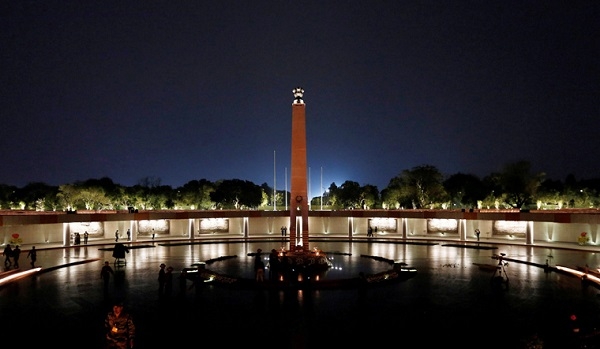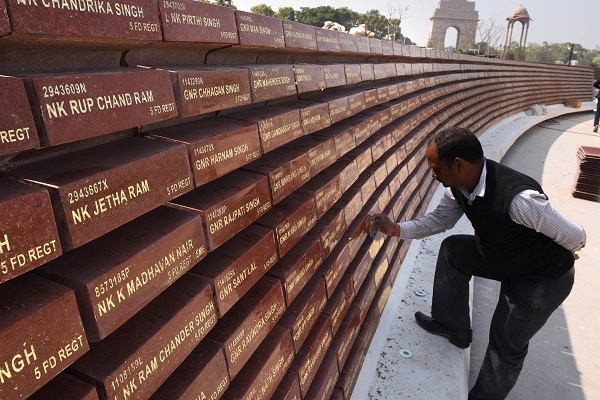Do we strive enough to maintain dignity, decorum and grace at National War Memorial?
Total Views |
-Anjali Ankad
It's been a year now that India holds up to respect, remember the courage and valor of 'our men' at the National War Memorial. But are we all striving enough to maintain the dignity, decorum and grace of this sacred place? Do we really carry the significance of that central obelisk, that it actually holds? Are'nt we supposed to connect evident to that sanctified monument, deep down the sea and that above the mountains? Let's pledge at first to understand and accept its realism and then cater to its divinity!
They not are merely soldiers to India, they are the pride of every Indian soul! Away from their families, guarding the nation across extreme weather and critical ground conditions, 'they' have the guts to sacrifice lives for the sake of countrymen, willingly! These were the exact thoughts striking our minds as we entered the National War Memorial in Delhi.

The War Memorial concept is based on a thought that it should be a place where we don’t mourn the death, but celebrate the life of the soldiers and pay respect to those sacrifices made by them. The NWM was pulled up to pay tributes to the Indian Armed Forces. The names of armed forces personnel martyred during the armed conflicts of 1947–48, 1961 (Goa), 1962 (China), 1965, 1971, 1987 (Siachen), 1987-88 (Sri Lanka), 1999 (Kargil), and other operations such as Operation Rakshak, are inscribed on the memorial walls.
The Memorial has four concentric circles and a central obelisk, at the bottom of which burns an 'eternal flame' representing the immortal soldier, 'Amar jawan'. The four circles are, Amar Chakra (circle of immortality), Veer Chakra (circle of bravery), Tyag Chakra (circle of sacrifice) and Rakshak Chakra (circle of protection) will include a 15-metre tall central obelisk with the eternal flame, bronze murals, graphic panels, the inscription of names of martyrs and busts of the 21 Param Vir Chakra.
After it was proposed six decades ago by the Indian Armed Forces, the National War Memorial was finally built in 2019 and was inaugurated by PM Narendra Modi, sprawled over 40 acres at India Gate complex in Delhi. However, to pin point, its important to think for what exactly took so long, almost six decades, to build NWM? Why politico-bureaucratic apathy played a part in constructing the NWM, that honours more than 25,000 soldiers who have laid their lives down since Independence?

India is probably the only major country which did not have a war memorial. Everything cannot be politicized, come on! Back in 2012, former Delhi CM Sheila Dixit had turned a bit blatant, opposing the NWM plan. She had said that it would affect the ambiance of that area and restrict people’s movement at one of the popular hangout zones, the India Gate. Nevertheless, this plan got successful when the Modi-led government passed a proposal in 2015 sanctioning ₹176 crores for the memorial alone.
India Gate is itself a memorial to more than 70,000 Indian soldiers of the British Indian Army who died in between 1914–1921 in the 1st World War and the 3rd Anglo-Afghan War. With the Amar Jawan Jyoti later being built under its arch to honour soldiers who died liberating Bangladesh in 1971, why we had to wait for so many years to pay homage to our military men? This easy highlights one of those 'Chanakya lines'.. The day the soldier has to demand his dues, will be a sad day!
It's been a year now that India holds up to respect, remember the courage and valor of 'our men' at the National War Memorial. But are we all striving enough to maintain the dignity, decorum and grace of this sacred place? Do we really carry the significance of that central obelisk, that it actually holds? Are'nt we supposed to connect evident to that sanctified monument, deep down the sea and that above the mountains? Let's pledge at first to understand and accept its realism and then cater to its divinity!

